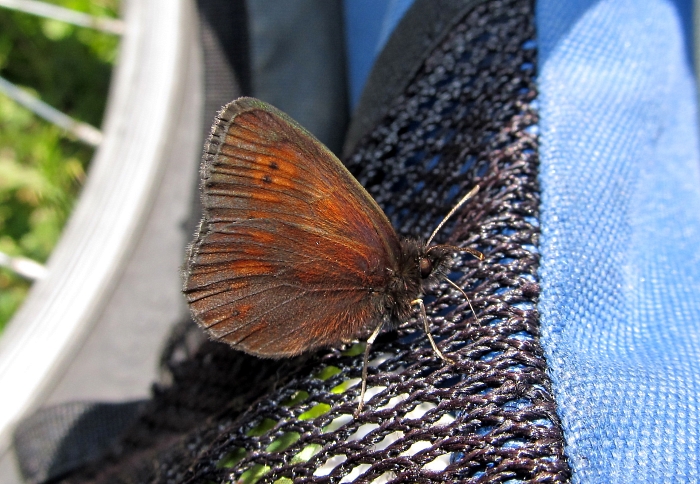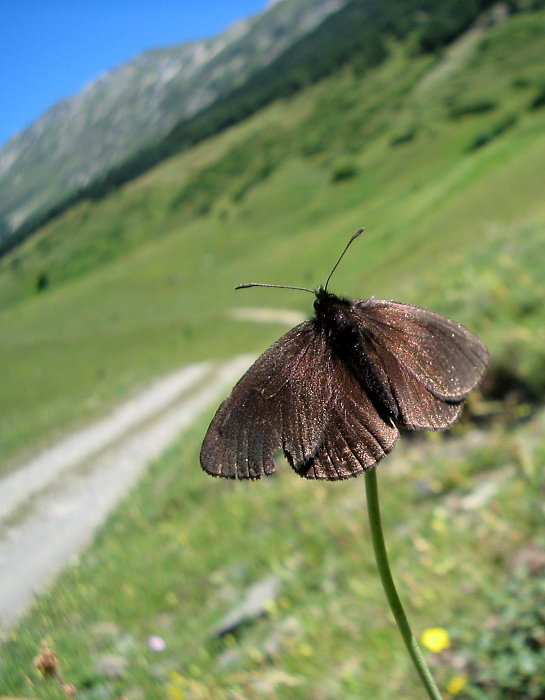
Female, Switzerland, August 2013

Female, Switzerland, August 2018

Female, Switzerland, August 2014

Male, Switzerland, July 2011

Male, Switzerland, August 2013

Male, Switzerland, August 2013

Female, Switzerland, July 2011

Female, Switzerland, August 2013

Female, white-spotted form
bubastis,
Switzerland, July 2011

Male (with Scotch argus begind), Switzerland, August 2011

Male, form
constans,
Val d'Aran, July 2005

Male, form
constans,
Val d'Aran, July 2005

Male, form
constans,
Val d'Aran, July 2011

Male, form
constans,
Val d'Aran, July 2011

Female ovipositing, Switzerland, July 2011

The egg she laid

Female, Switzerland, September 2010

Female, Switzerland, September 2010
Widely distributed in the
mountains of
Europe, this is a common, though often rather local, ringlet. In
Switzerland, it is found on grassy, alpine slopes from about 1500m to
2500m, though it is said to fly as low as 1200m. It usually appears in
mid-July - sometimes earlier - and females are still on the wing in
September.
Females are unmistakable, with their large, yellowish (occasionally
white, in f. bubastis)
blotches on the underside hindwing, often fused into an irregular band.
Males are less obviously distinctive, but actually easy to identify
when you are familiar with them. They have more limited and regular,
reddish spots on the underside hindwing, with the largest spot in s.4.
These spots have a characteristic 'flame' tone - reddish with hints of
yellow - and the underside in general is warm. The forewing upperside
of both sexes typically has two blind apical ocelli (they never have
pupils) set in a red band or semi-confluent red spots, narrowing as it
goes south. There may be other point-like spots but these are never
strong. The hindwing upperside usually has a reddish spot in s.4, with
or without other small red spots below. The smaller and rarer eriphyle
ringlet is similar to the male and also has a warm tone to the
underside. This has a more obvious reddish flush on the forewing
underside, extending to the base of the wing, and a neater, generally
more complete row of less elongated spots on the underside hindwing.
In the Pyrenees, form constans
flies. This is all dark on both surfaces of the wings, though I have
seen females with hints of red and even with visible apical dots on the
forewing, flying with pure black individuals. Another very dark form, pyrrhula, flies at
altitude in the Alps. This is small and usually has reddish visible in
the apical regions of the forewings.
Caterpillars of the yellow-spotted ringlet feed on red fescue and
hibernate twice, the full cycle taking two seasons.



















